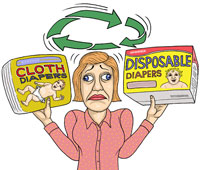66 Things You Can Can Grow At Home: In Containers, Without a Garden : Planet Green - StumbleUpon

- Boulder, CO, USA | Mon Apr 26, 2010 12:55 PM ET
READ MORE ABOUT:
Growing your own food is exciting, not only because you get to see things grow from nothing into ready-to-eat fruits and veggies, but you also don't have to worry about the pesticides they might contain, and you definitely cut down on the miles they—and you—have to travel.
As it turns out, with pretty minimal effort, anyone can be a gardener. My boyfriend and I are essentially first-timers this season and so far have the beginnings of strawberries peeking out, tomatoes are on their way, the basil's about ready for a big batch of pesto, and once the last frost hits, the peppers, kale, spinach, chard, and mesclun will be on their way, too. All on a tiiiny little terrace (with the help of a little DIY carpentry).
If you're up to the challenge—and it really isn't much of one—growing your own food can be so rewarding. And so much cheaper! Just be sure to choose the right planter or container, learn how to maintain it properly, and go find yourself some seeds! (Or starter plants.)
Here's a starter list of all the crazy things even urban gardeners, without space for a garden, can grow at home.
Photo credit: Gardener's Supply
Tree fruits - including apples
1. Apples can be grown in a container; you can also grow them on the balcony or other small space using a technique called espaliering.
2. Kumquats
3. Avocados (plenty of extra tips online if you search)
4. Blackberries
5. Blueberries (sometimes helpful videos are available online)
6. Pomegranate
7. Cherries
8. Figs
9. Pears
Photo credit: Photodisc/Thinkstock
Citrus fruits
Citrus trees in particular are said to be good for beginning gardeners and are easy to grow indoors, so don't let inexperience or lack of outdoor space stop you from enjoying fresh-picked, hyper-local fruit.
10. Dwarf oranges
11. Grapefruit
12. Tangerines
13. Meyer lemons
14. Limes
Tropical fruits
Tropical fruits can also be surprisingly easy to grow indoors, even in non-tropical climates. Such as...
15. Bananas (look for container gardening tips online)
16. Pineapple
17. Papaya
18. Guavas (several varieties)

Photo credit: © iStockphoto.com/Thinkstock
The real surprises
19. Hops—yes, as in the "spice" ingredient in beer. Turns out they're easy to grow!
20. Aloe Vera
21. Strawberries
22. Tea (well, herbal tea)
23. Quinoa!
Photo credit: © iStockphoto.com/Thinkstock
The non-surprises
24. Tomatoes
25. Summer squash
26. Other squashes, like acorn and pumpkin
27. Hot Peppers
28. Sweet peppers
29. Cucumbers
Melons
30. Small cantaloupe
31. Jenny Lind melon (an heirloom cantaloupe)
32. Golden Midget Watermelon
Photo credit: Jupiterimages/Thinkstock
Herbs
Just about any herb grows well indoors—just be sure that if you're going to do any container-sharing, you do your research first about which herbs co-habitate well together. (Some will hog water, for example, and leave the others dried out.)
33. Basil
34. Oregano
35. Parsley
36. Rosemary
37. Chives
38. Catnip
39. Thyme
40. Sage
41. Parsley
Photo credit: Comstock Images/Thinkstock
Leafy Greens
42. Kale
43. Mesclun greens
44. Spinach
45. Swiss chard
46. Lettuces (plenty of options there, from micro-greens to head or loose-leaf)
47. Mustard greens
48. Collard greens
49. Arugula
Root Vegetables
50. Carrots
51. Beets
52. Potatoes
Photo credit: Pixland/Thinkstock
Other healthy-sounding stuff
53. Sprouts
54. More sprouts: mung bean and lentil sprouts
55. Wheatgrass
56. Kohlrabi
57. Turnips
58. Rutabagas
59. Celeriac
60. Parsnips
61. Jerusalem Artichoke
62. Sugar snap peas
63. Rhubarb (not ideal in a container, but it can work)
64. Mushrooms (again, more tips online if you look)
65. Pole Beans
66. Aaaand... asparagus, although some disagree that it does well in a container. Try it if you're ok with a risk!
Bonus 67: You can grow your own loofah, too, but you'd need a garden rather than a container for that.
Related Posts:
Grow Your Veggies Upside-Down!
15 Creative Container Garden Ideas
Quick Tips for Getting Rid of Weeds
Top 35 Ways to Succeed at Organic Gardening










